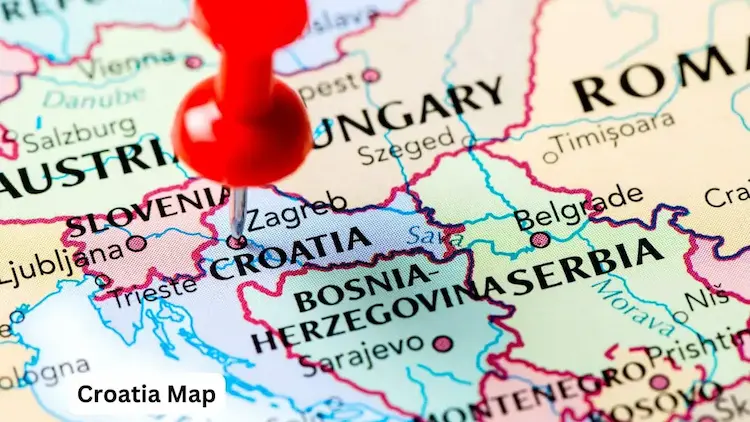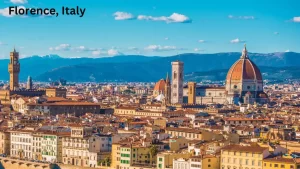Gluten-Free Croatia 2025: 12 Celiac-Safe Restaurants, Supermarkets & Travel Tips
This post contains affiliate links. I may receive a small commission if you purchase something through these links, which helps me continue to deliver great content with no extra cost to you. I never recommend products or services I wouldn’t use myself!
Imagine standing on a cliff overlooking the Adriatic Sea, the water shimmering like a sapphire, while your celiac son munches happily on a “bez glutena” pastry. That was our family’s reality in Croatia, a country that blends medieval charm, turquoise waterfalls, and a surprisingly robust gluten-free scene. When my son was diagnosed with celiac disease, I thought our European adventures were doomed.
But Croatia proved me wrong, delivering safe, delicious meals and unforgettable experiences. From 100% gluten-free restaurants to hidden island gems, here’s your ultimate guide to a celiac-safe Croatia trip in 2025/2026. I’ll answer questions you didn’t know you had, like how to spot cross-contamination risks and where to find “bez glutena” treasures, so your family can savor Croatia stress-free.
Quick Tips for Gluten Free in Croatia
✅ Learn the phrase “Bez glutena”, which means gluten-free in Croatian.
✅ Use apps like Find Me Gluten Free to locate safe restaurants.
✅ Stick to cities like Dubrovnik, Split, and Zagreb, they have the best gluten-free options.
✅ Shop smart: Konzum, Spar, DM, and Bio&Bio all stock gluten-free products.
✅ Ask staff to avoid cross-contamination, awareness is growing, but it’s not guaranteed.
✅ Carry a gluten-free restaurant card in Croatian to explain your needs clearly.
✅ Check menus for symbols or ask if a dish is “bez glutena i bez kontaminacije” (gluten-free and contamination-free).
✅ Pack snacks for remote areas or island trips where gluten-free options may be limited.
Why Croatia Is a Gluten-Free Family Paradise
Croatia isn’t just another European destination; it’s a celiac-friendly paradise where ancient Roman ruins meet vibrant markets and gluten-free delights. My spouse and son, who are gluten-free, thrived on naturally gluten-free dishes like grilled fish with olive oil and herbs, slow-cooked beef stews, and creamy polenta served with roasted vegetables.. Cities like Dubrovnik, Split, and Zagreb boast restaurants with “bez glutena” menus, while supermarkets stock everything from gluten-free pasta to fresh bread. But it’s not just about food, Croatia’s beaches, islands, and history make it a dream for families.
Here’s how we navigated our gluten-free Croatia adventure and how you can too.
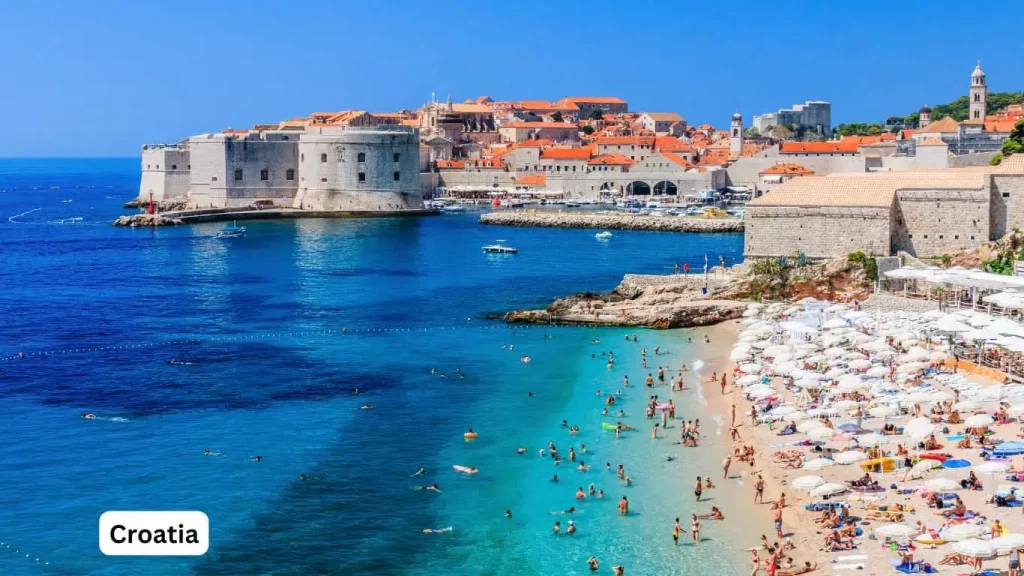
12 Celiac-Safe Restaurants Across Croatia
Finding celiac-safe dining in Croatia is easier than ever, especially in tourist hubs. Below are our top picks, including 100% gluten-free spots and others with strict protocols to avoid cross-contamination.
- aROMA Gelato Experience (Dubrovnik)
A gluten-free gelato haven in Dubrovnik’s Old Town. My son devoured their mango sorbet, and I loved the pistachio. No reservations needed.
🔗 Visit aROMA - Soul Kitchen (Dubrovnik)
This cozy spot offers gluten-free breakfast dishes and staff is trained in cross-contamination prevention. They also offer lunch and dinner, but the menu needs to be customized to be GF. Ask for the bez glutena menu.
🔗 Book a table - Zuzori (Dubrovnik)
A Michelin-starred Mediterranean gem with gluten-free options like risotto and peka. They confirmed separate prep areas for our son’s meal. Reserve ahead.
🔗 Check availability - SALT Gluten-Free House (Split)
A 100% gluten-free restaurant serving pizzas and pastas. My spouse raved about the chickpea flour gnocchi. Perfect for families.
🔗 Visit SALT - Dalmatino (Hvar)
This Hvar hotspot offers gluten-free seafood and polenta dishes. Their staff swapped sauces to ensure safety. Email to confirm bez glutena options.
🔗 Book now - Pet Bunara (Zadar)
Known for gluten-free risotto and grilled fish, this restaurant uses dedicated utensils. Our son loved their fruit platter dessert. Call ahead.
🔗 View menu - Degenija (Plitvice Lakes)
Near Plitvice Lakes, Degenija serves gluten-free peka and salads. They confirmed no shared fryers, easing my mind. Great for park visitors.
🔗 Reserve a table - Rica (Rijeka)
A 100% gluten-free gem in Rijeka, offering pizzas and desserts. My son’s gluten-free brownie was a hit. No cross-contamination worries.
🔗 Visit Rica - Vegehop (Zagreb)
A vegetarian restaurant with a robust gluten-free menu. Their polenta fries were kid-approved. Check for bez glutena labels.
🔗 Book here - Curry Bowl (Zagreb)
Gluten-free curries and rice dishes in a cozy setting. The staff walked us through safe prep practices. Great for spice lovers.
🔗 Check availability - Val Marina Restaurant (Hvar)
Offers gluten-free seafood and meat dishes with stunning sea views. Their staff was proactive about celiac safety. Reserve early.
🔗 View menu - Le Bistro Esplanade (Zagreb)
Located in the historic Esplanade Hotel, this bistro serves gluten-free breakfast and dinner options. Their fruit tart was a safe treat. Email for gluten-free requests.
🔗 Book a table
Pro Tip: Use a celiac translation card saying, “Imam celijakiju, ne mogu jesti gluten” (I have celiac disease, I can’t eat gluten) and specify “bez kontaminacije” (contamination-free). Apps like Find Me Gluten Free helped us confirm these spots.
Gluten-Free Supermarket Finds in Croatia
Croatia’s supermarkets are a celiac’s dream. In Dubrovnik, I wandered into a Konzum expecting nothing and found a “bez glutena” treasure trove. Here’s what to look for:
- Konzum and Spar: Stock Schar bread, pasta, and crackers, plus gluten-free baking mixes.
- Bio&Bio: A health food chain with organic gluten-free snacks, oats, and desserts. Their Zagreb store was our go-to.
- DM (Drogerie Markt): Offers gluten-free protein bars and cookies, perfect for kids.
- Lidl and Plodine: Budget-friendly with “bez glutena” labels on pasta and snacks.
Hidden Tip: Check labels for “bez pšenice, ječma, raži i zobi” (no wheat, barley, rye, or oats) to ensure celiac safety. Pack a small cooler for island trips to store finds.
Naturally Gluten-Free Croatian Dishes
Croatian cuisine is a celiac-friendly goldmine. Many dishes are naturally gluten-free, relying on fresh seafood, meats, and veggies. Our family’s favorites:
- Peka: Meat and veggies slow-cooked under a dome, often served with polenta. Confirm no gluten in seasonings.
- Grilled Fish: Drizzled with olive oil and herbs, a staple in coastal towns like Split.
- Crni Rižot: Black seafood risotto, naturally gluten-free if sauces are safe.
- Sarma: Cabbage rolls (check for gluten-free fillings).
- Polenta: A creamy cornmeal side, perfect with stews.
Pro Tip: Ask restaurants, “Je li ovo bez glutena i bez kontaminacije?” (Is this gluten-free and contamination-free?) to avoid hidden gluten in sauces.
Avoiding Cross-Contamination: Celiac Safety Tips
Cross-contamination is a celiac’s biggest foe. Here’s how we stayed safe:
- Call or Email Ahead: Confirm dedicated prep areas and fryers. Soul Kitchen and Rica were standout for their protocols.
- Use a Translation Card: We used one from Amazon with “Imam celijakiju” and cross-contamination details.
- Dine Off-Peak: Early lunches mean less rushed staff, ensuring careful prep. This worked at Zuzori.
- Pack Snacks: We carried Schar crackers and Kind bars for remote islands like Korčula.
Hidden Tip: Teach your kids “bez glutena” to empower them to communicate. My son loved using it at markets, sparking smiles from vendors.
Gluten-Free Adventures Beyond Dining
Croatia’s beauty pairs perfectly with its food. Here’s how we filled our days:
- Dubrovnik Old Town: Wander the Game of Thrones-famous walls and dine at aROMA Gelato.
- Plitvice Lakes National Park: Hike turquoise trails and refuel at Degenija’s gluten-free menu.
- Hvar Island: Climb Fortica Fortress and enjoy Dalmatino’s safe dishes.
- Cetina Canyon Ziplining: An 8-zipline thrill over stunning views. Book via Viator, with gluten-free lunch options nearby in Omis. 🔗 Book now
Cultural Gem: Visit Zagreb’s St. Mark’s Church or the Heiva-inspired Korčula Sword Dance festival for a taste of Croatian heritage.
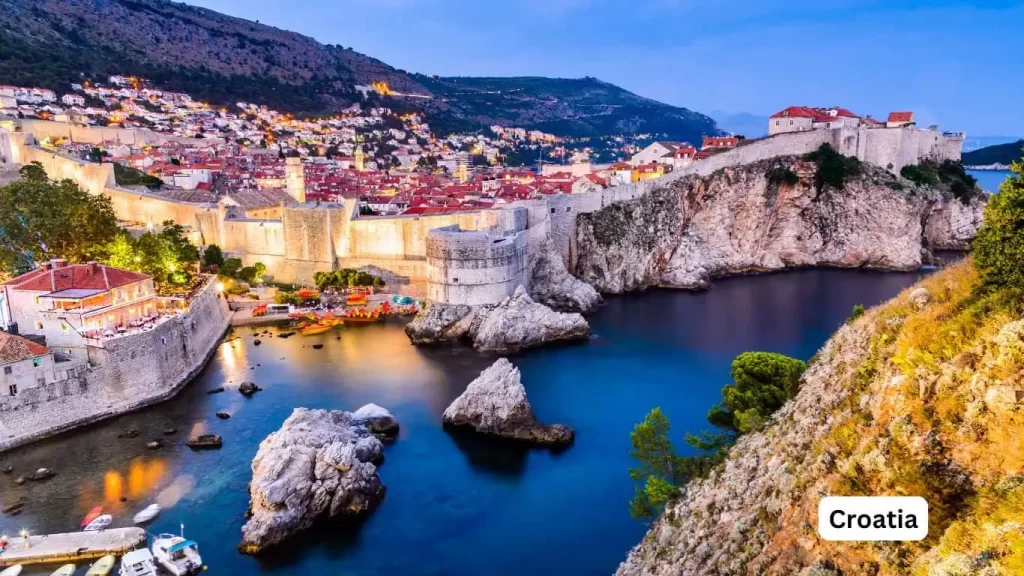
How to Find Gluten-Free in Croatia: Tips & Essentials
It’s easy to find Gluten free options in Croatia. Here are some starting points:
- Restaurants: Many restaurants, especially in tourist areas like Dubrovnik, Split, and Zagreb, are aware of gluten-free dietary needs. Some even have gluten-free options clearly marked on their menus. Check the travel map to find more.
- Health Food Stores: Specialty stores in larger cities carry a wider range of gluten-free products, including snacks, bread, and pasta.
- Apps and Websites: Use apps like Find Me Gluten Free or websites that list gluten-free-friendly restaurants in Croatia.
These stores should provide plenty of options for gluten-free travelers in Croatia.
7-Day Gluten-Free Croatia Itinerary: Dubrovnik to Zagreb
Ready to plan your gluten free Croatia escape? Here’s a week-long itinerary that hits all the highlights:
Day 1: Gluten Free Dubrovnik Old Town – Where to Eat & Explore
Kick things off in Dubrovnik. Wander the UNESCO-listed Old Town, climb the city walls, and soak in the views. Then, treat yourself at spots like Soul Kitchen or Zuzori, both nail gluten-free Dubrovnik dining with flair.
Gluten Free Restaurants: There are plenty of restaurants offering GF options in Dubrovnik’s old town.
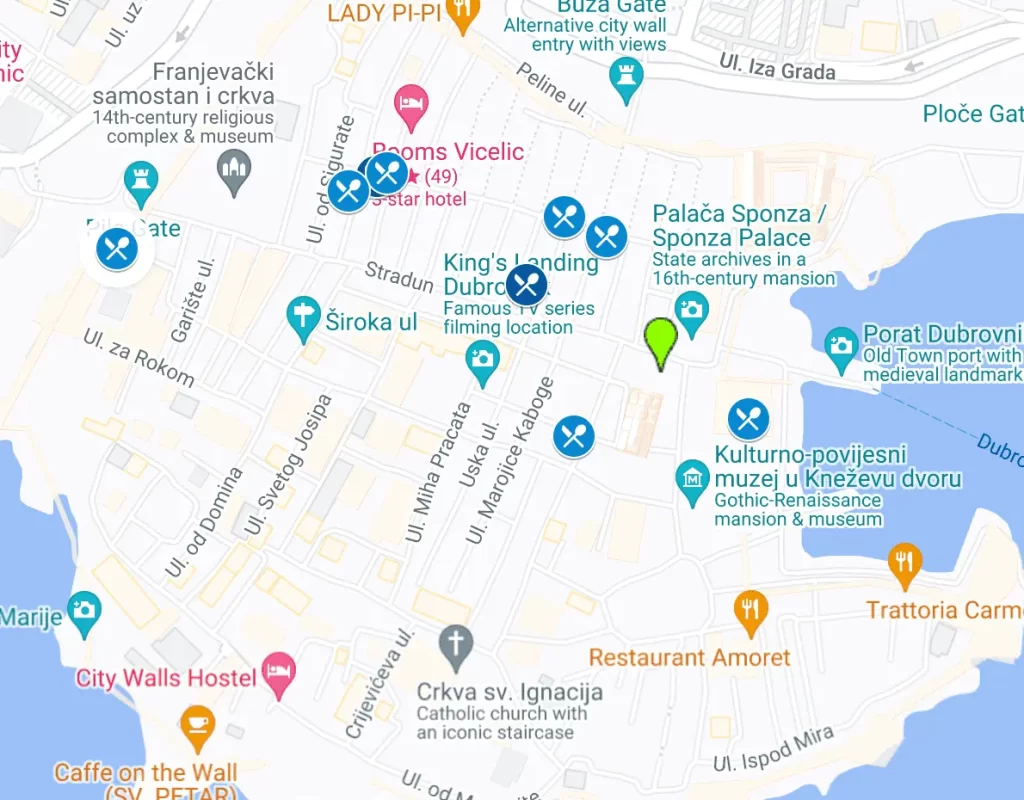
- aROMA gelato experience Boutique Dubrovnik when you want some delicious gelato 100% gluten free
- Hard Rock Cafe
- Zuzori a Mediterranean Michelin star restaurant
- Soul Kitchen Dubrovnik – unique and fabulous with many GF and vegetarian options
- Gradska kavana Arsenal Restaurant
- Restaurant Marco Polo – Michelin star with traditional and modern Dalmatian food
Lokrum Island: A short boat ride from Dubrovnik, this island is a nature reserve with botanical gardens, a monastery, and beautiful walking paths.
Highlights: Relax on the beaches, visit the Dead Sea (a small salt lake), and explore the ruins of the Benedictine monastery.
Day 2: Enjoy Gluten-Free Dining and Attractions in Split
Next up, Split’s Diocletian’s Palace is a history buff’s dream. After exploring, grab lunch at SALT Gluten-Free House 100% gluten-free in Croatia goodness. Stroll the Riva Promenade and let the harbor vibes sink in.
Highlights: Wander through the Peristyle Square, visit the Cathedral of Saint Domnius, and explore the palace basements.
Day 3: Gluten-Free Hvar Island: Dining, Beaches, and More
Hop a ferry to Hvar, where beaches and nightlife collide. Climb to Fortica Fortress for epic views, then dig into gluten-free delights at Dalmatino. Bonus: Ask which beaches in Croatia offer the best blend of natural beauty and nearby dining options, Hvar’s got answers.
Top Gluten-Free Restaurants in Croatia: From Dubrovnik to Split
- Dalmatino
- Dva Ribara
- Val Marina Restaurant
- Of course, there are more restaurants
Day 4: Gluten-Free Zadar: A Historical and Culinary Journey
Zadar’s Sea Organ serenades you with waves, while the Sun Salutation lights up the night. Refuel at Pet Bunara with gluten-free options that hit the spot.
Restaurants with Gluten Free options:
Day 5: Explore Gluten-Free Dining and Nature in Plitvice Lakes
Nature lovers, this one’s for you. Plitvice’s waterfalls and wooden walkways are pure magic. Degenija’s got your Croatia gluten free lunch covered.
Restaurants with Gluten free options:
Day 6: Gluten-Free Rijeka: Culture and Cuisine
Trsat Castle offers sweeping views, and Korzo’s café scene is perfect for people-watching. Rica, a 100% gluten-free gem, makes dining a breeze.
Gluten Free Restaurants in Rijeka and gluten free options in the area :
- Rica – 100% Gluten Free Restaurant
- Valle Losca Tavern (in Opatija)
- Roko
Day 7: Gluten-Free Zagreb: Capital City with Celiac-Friendly Spots
Wrap up in Croatia’s capital. St. Mark’s Church and the Museum of Broken Relationships are must-sees, and Vegehop keeps your gluten free hotels Croatia stay delicious.
Restaurants with Gluten Free options:
15 Interesting Facts to Know Before Traveling to Croatia
- Croatia has an amazing Adriatic coastline with idyllic islands, beaches, and seaside towns like Dubrovnik.
- Dubrovnik’s Old Town is a UNESCO World Heritage site known for its medieval walls, marble streets, and Game of Thrones filming locations.
- Plitvice Lakes National Park is a natural wonderland of turquoise lakes, waterfalls, and boardwalks through limestone landscapes.
- The local cuisine features lots of fresh seafood, cured meats, cheeses, olive oil, risottos, and other Mediterranean fare.
- Many traditional Croatian dishes like crni rižot, pršut, olive oils, and stews are naturally gluten-free.
- Cities like Zagreb, Split and Dubrovnik have excellent gluten-free scenes with bakeries, supermarkets, and restaurants accommodating gluten-free diets.
- Croatian wines like plavac mali (red) and pošip (white) are high quality and affordable.
- The country has a fascinating mix of cultural influences including Roman, Venetian, Austrian, Hungarian and Ottoman.
- English is widely spoken, especially in tourist areas, making it easy for English speakers to get around.
- Croatia uses the Euro as currency as of 1.1.2023.
- Traveling between islands and coastal cities is best done by ferry or catamaran.
- Summer, especially July and August, is peak tourist season when things are most crowded and expensive.
- Spring and fall offer milder weather, fewer crowds, and lower prices for traveling in Croatia.
- Croatia has a complicated history of conflict during the Yugoslav Wars for independence in the 1990s.
- It’s an overall very safe country for tourists, with high standards and a welcoming attitude toward visitors.
So, Is Croatia Worth It?
If you’re still wondering whether Croatia is good for gluten-free travelers or worth the trip, let me put it simply: Yes, a thousand times yes. It’s got history, nature, and a food scene that rivals anywhere in Europe, all wrapped in a gluten-free-friendly package. Prices? Not dirt cheap, but the value is unreal for what you get.
FAQs
Is Croatia Good for Gluten Free Travel?
Yes! Cities like Dubrovnik, Split, and Zagreb offer gluten-free menus, labeled supermarket items, and growing awareness of celiac safety.
Do U.S. citizens need a visa for Croatia?
No, U.S. citizens do not need a visa for Croatia for stays up to 90 days for tourism. However, your passport should be valid for at least three months beyond your planned departure date.
Please note that this information is current as of publishing this post. But visa requirements can change. It is always advisable to double-check visa requirements with the Croatian Embassy or Consulate before you travel.
Is Croatia safe for tourists?
Yes, Croatia is safe for tourists. It is one of the safest countries in Europe, with a welcoming atmosphere and low crime rates.
Is Zagreb, Croatia, worth visiting?
Yes, Zagreb is worth visiting. The capital city offers a rich cultural experience with its medieval upper town, museums, and vibrant street life.
When is the best time to travel to Croatia?
The best time to visit Croatia is in late spring (May-June) or early autumn (September-October). The weather is pleasant, and the crowds are smaller compared to peak summer months.
How to travel in Croatia?
You can travel through Croatia by bus, car rental, or ferries if you’re island-hopping. Public transportation is efficient, especially between major cities.
Where to Find Gluten Free in Dubrovnik Old Town?
Restaurants like Soul Kitchen, Zuzori, and Marco Polo offer celiac-safe options. Ask for “bez glutena” menus and speak with staff about preparation practices.
What Are the Best Supermarkets for Gluten Free in Croatia?
Konzum, Spar, DM, and Bio&Bio are great for gluten-free products. Look for “bez glutena” labels on snacks, pasta, and baking items.
Is Gluten Free in Croatian the Same as Celiac-Safe?
Not always. “Bez glutena” means gluten-free, but not all items are safe for celiacs. Ask about cross-contamination, especially in restaurants.

